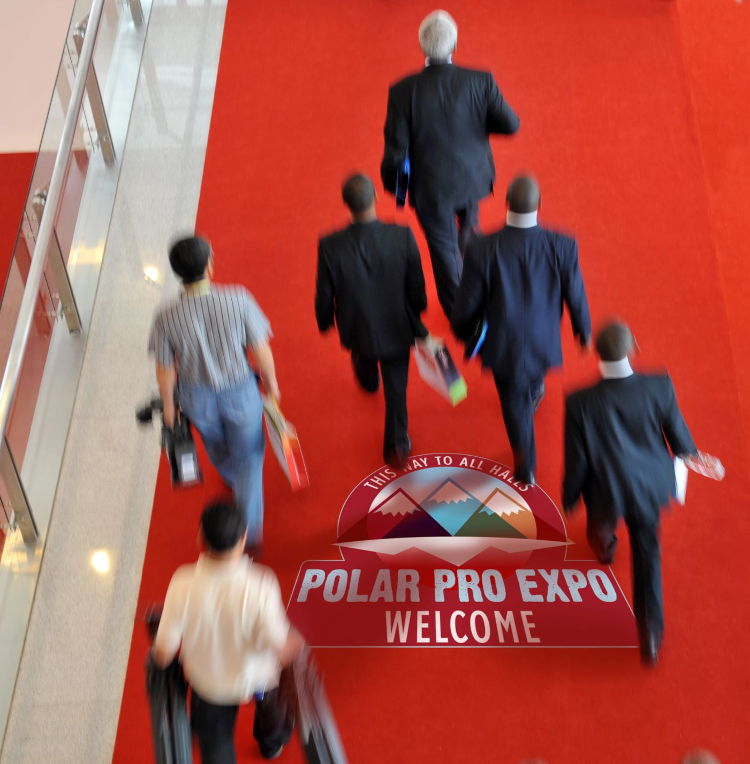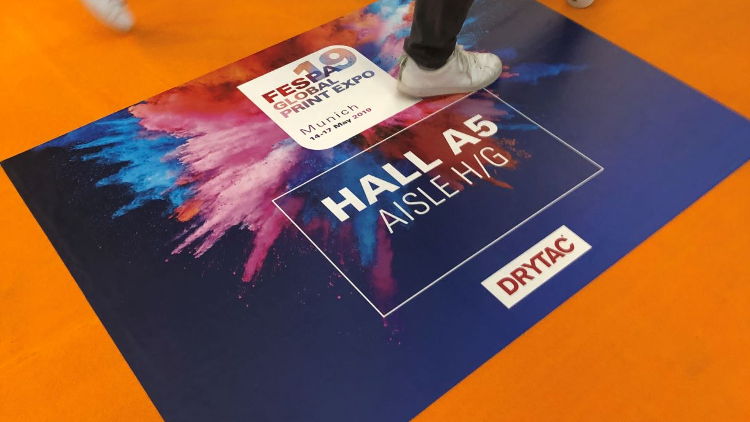Floor graphics are a great marketing medium and, increasingly, an essential communication tool thanks to their effectiveness in guiding people around a space. It's crucial that floor decals or markers are installed correctly to avoid slips and trips and the graphics product itself is safe for its environment.
Most materials and adhesives designed for floor graphics applications are compatible with all common flooring types, but carpets can present an issue.
Specifically, some users may find adhesion is difficult on new carpets - in fact the same type of graphic applied to an old carpet within the same location could suffer no adhesion issues while installation on a new carpet could prove almost impossible. The reason may be the material, the coating and even the design of the carpet.
Certain types of recycled, low-VOC or environmentally friendly carpets may be labelled as 'stain resistant' or 'never stain' and their properties also reduce adhesion. Often sold as carpet tiles, they are typically made from either durable and resilient nylon or polypropylene. Also known as olefin, polypropylene will not fade, will not absorb water and can contain anti-staining additives - which also repel adhesives.
In addition, polypropylene carpet will have a low surface energy (LSE) surface, which means it has a weak molecular attraction and is therefore more difficult to bond with other substances such as adhesive. Combine LSE with anti-staining additives and you get a surface that is very difficult to adhere to - very much like low-VOC latex/Teflon paint on walls. Normal removable adhesive will take 48 hours to properly wet out, but with this new type of carpet the adhesive does not wet into the surface.
Floor graphics products are generally rated for application to low-pile, industrial grade, smooth-surface carpet. Textured carpet - any design with ribbing, grooves or cut-outs - will not be compatible as the textured surface gives far less adhesion points for the glue to stick too.
To ensure a floor graphics product's suitability for its intended location on any surface, an adhesion test is recommended before proceeding. No-one wants to spend time and money on a project that ends in failure and this is especially important with floor graphics; loss of adhesion can pose a serious safety hazard.
One option is using a permanent adhesive, which risks leaving residue on your floor surface. Fortunately there are temporary alternatives to explore. Drytac offers numerous media products developed for floor applications, with experts able to advise on the right one. Popular products include Drytac FloorTac and FloorTac Textures (both available in North America). FloorTac polymeric PVC film can be applied to virtually any type of flooring including short-pile carpets, providing a non-slip surface for interior graphics for up to nine months when paired with a recommended overlaminate. FloorTac Textures is a 'print and go' one-part solution that can be applied to short-pile carpets and provide indoor durability without an overlaminate for up to six months.

Drytac SpotOn Floor 200, Drytac Polar Floor PET 170 and Drytac FloorTac Plus (available in the UK) are also options for short-term floor graphics. SpotOn Floor 200 monomeric PVC film is designed for short-term, indoor non-slip floor graphics without the need for lamination for up to three months, with a post-printed R10 anti-slip rating and 'low slip potential' rating. Polar Floor PET 170 is a PVC-free polyester film which is designed for short-term, indoor non-slip floor graphics without the need for lamination for up to six months, with a post-printed R10 anti-slip rating and 'low slip potential' rating. Drytac FloorTac Plus, paired with
Interlam Pro Emerytex, provides an R11 certified slip-resistant finish on surfaces including short-pile carpets for up to nine months, with a pebble-effect finish for eye-catching graphics.
The attention-grabbing effect of floor graphics was demonstrated at the FESPA Global Print Expo in Munich in 2019, where around 70 directional floor graphics printed on Drytac media were in situ across the show floor. All were installed by Drytac staff before the halls opened on the first day. Drytac's experts can provide more advice on floor graphics of all types; for more information, please visit www.drytac.com.
Authored by Shaun Holdom, Global Product Manager at Drytac.





